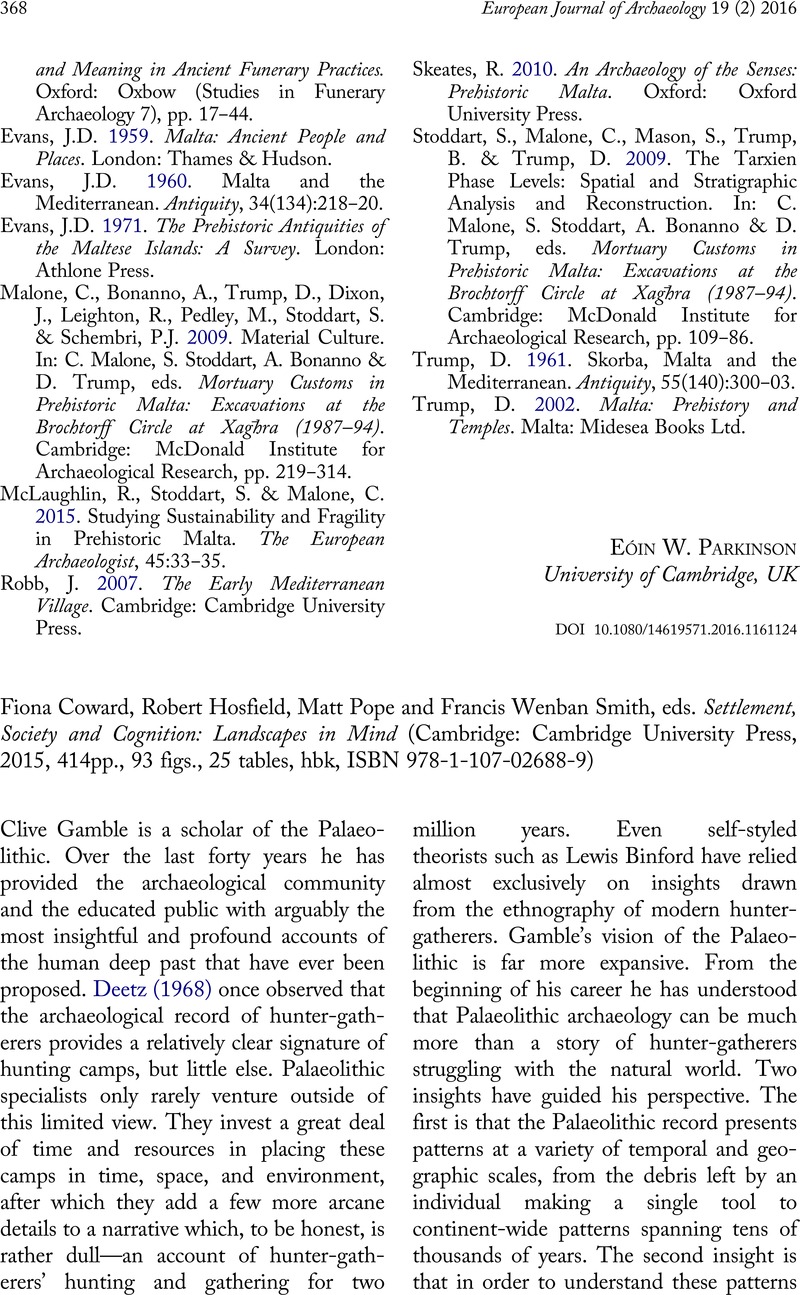Ambrose, S.
2010.
Coevolution of Composite-tool Technology, Constructive Memory, and Language: Implications for the Evolution of Modern Human Behavior. In:
Wynn, T. &
Coolidge, F.L., guest eds.
Working Memory: Beyond Language and Symbolism.
Chicago:
Chicago University Press.
Current Anthropology, 51, Supplement 1 (Wenner-Gren Symposium Series), pp. S135–47.
Google Scholar 